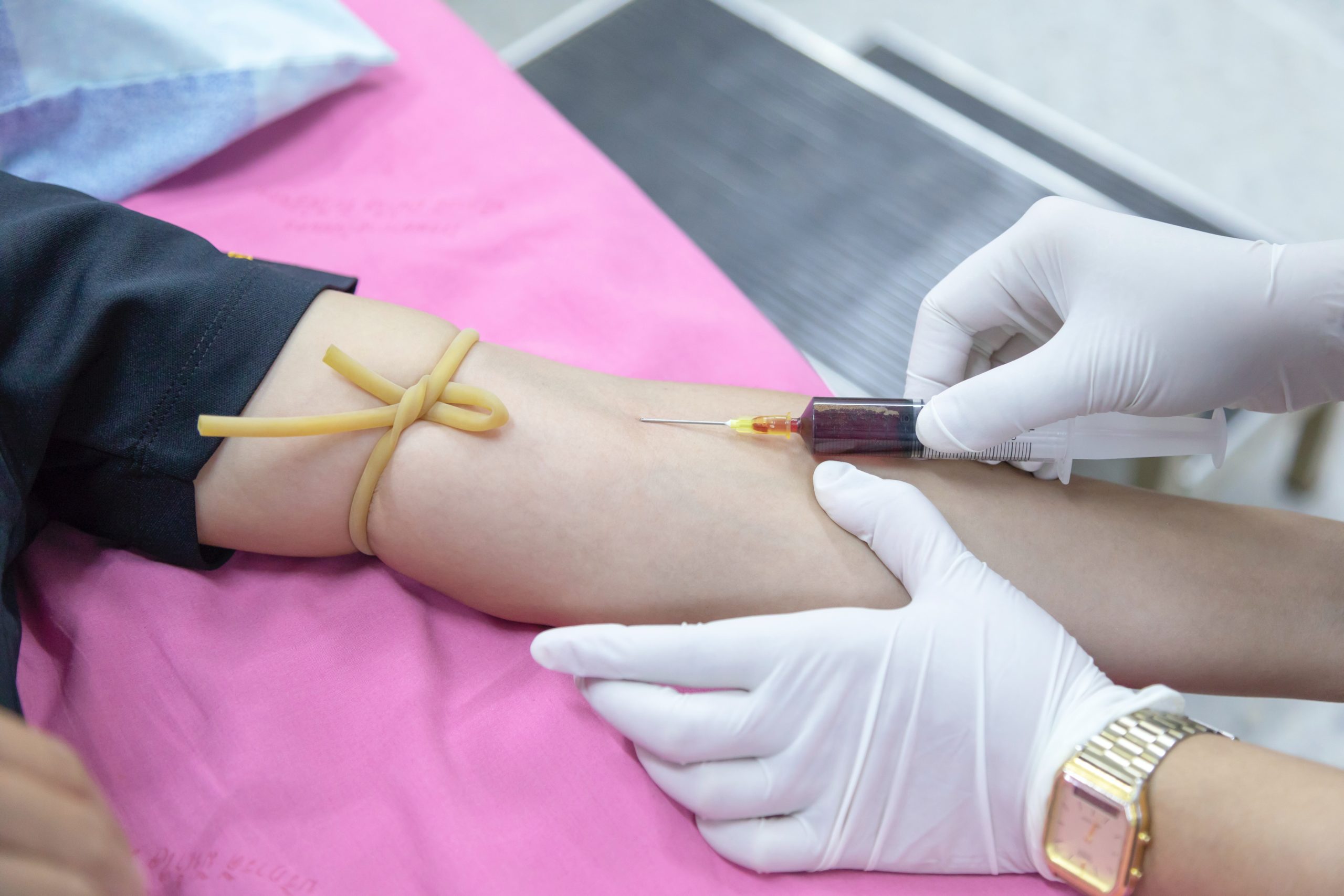What is MCV? – Purpose, Limitations, and Risks

Do you have symptoms like pale skin, fatigue, or lightheadedness? If yes, then you might have to take an MCV test. Now you must be thinking, what is the MCV test? What is the purpose of this test? What are the limitations and risks? Here is an article with all you need to know about MCV tests.
MCV tests help in diagnosing anemia and other health conditions. The MCV test’s value helps determine the average size of blood cells present in a blood sample.
What is MCV?
Now the question is, what does MCV mean in a blood test? MCV stands for mean corpuscular volume or mean cell volume. There are basically three types of blood cells – platelets, red blood cells, and white blood cells.
An MCV blood test is carried out to measure our blood cells’ average size, which is also known as erythrocytes. The role of red blood cells is to carry oxygen from the lungs to all the cells present in our body. Our cells require oxygen in order to reproduce, grow, and to stay healthy.
In case your red blood cells are too large or too small, it could be a symptom or sign of a blood disorder like vitamin deficiency, anemia, or any other medical condition.
MCV can render a wide range of vital information. The test is interpreted along with other red blood cell indices like red cell distribution width (RDW), mean corpuscular hemoglobin concentration (MCHC) with the intent to narrow the diagnosis.
If your MCV blood test is low, it means the blood cells are small, and it is known as microcytosis. In the case of high MCV, the blood cells are large, and it is known as macrocytosis (Source). MCV tests are beneficial even if you have a normal count of red blood cells. It helps in identifying kidney disease.
What is the Purpose of the MCV Test?
Now that you know what is MCV? Let’s look at the purpose of a MCV test.
MCV or mean cell volume refers to one of the numbers present in the complete blood count (CBC). Whenever a CBC is ordered by the doctors, they also get access to the MCV. It can be ordered as a part of routine screening exams, treatment, diagnosis, or a follow-up for a wide range of medical conditions.
Below mentioned are some of the conditions in which a doctor might ask you for an MCV test.
- To differentiate between different anemia.
- For the purpose of assessing possible symptoms of anemia like pale skin, lightheadedness, and fatigue. There could be various causes of fatigue and the test helps in finding out the right cause.
- To assess other abnormalities like abnormal platelet or white blood cell count.
- It is ordered to estimate prognosis in individuals with specific medical conditions.
- As a part of additional tests in various medical conditions.
MCV is used to determine the size of RBCs. A high MCV would indicate large RBCs as compared to average. On the other hand, large MCV means small RBCs. Calculating the average size of RCBs is helpful in determining the type of anemia.
- Low MCV means microcytic anemias like iron deficiency anemia.
- High MCV means macrocytic animals like vitamin B12 deficiency anemia.
Limitations of MCV
When analyzing the limitations of MCV tests, it is essential to consider various things.
- Mixed Anemias – MCV is less beneficial if a person has more than one anemia. For instance, an individual could have serious iron deficiency anemia and serious iron-folic acid deficiency anemia, and he or she could have normal MCV.
- False Positive – In certain situations, the results of MCV might be falsely elevated. This can be the case if the blood sugar level of a person is high.
- Post-Transfusion – If an individual has had a blood transfusion, then MCV is less valuable. In such a case, MCV reflects the size of red blood cells that are transfused with the own blood cells of a person. It is essential to measure MCV before starting the process of blood transfusion.
Other Tests Similar to MCV
Mean corpuscular hemoglobin (MCH) is almost similar to MCV. These readings also render similar information. Usually, doctors depend on MCV readings, and they dismiss the MCH test for CBC readings.
Tip – Do not confuse MCV with MCHC. It is different and utilized for diagnosing anemia.
MCV is interpreted with other tests that are carried out in a CBC. For instance, using only MCV tests might create confusion between iron deficiency and thalassemia as MCV is low in both cases. Below mentioned are some complimentary tests with MCV.
- Red Cell Distribution Width (RDW) – It is the measurement of variation in red blood cells’ size.
- Red Blood Cell Count – It refers to the number of red blood cells present in a blood sample.
- Hematocrit/ Hemoglobin – Hematocrit is the overall volume of red blood cells in a particular blood volume in comparison to the plasma volume.
- Mean Corpuscular Hemoglobin Concentration (MCHC) – It is the average concentration of hemoglobin present in a red blood cell.
Doctors might order other tests, also like iron levels, to get further clarification.
Risks
A little risk is related to checking MCV and CBC other than a little risk of bruising, infection, or bleeding caused by the blood draw.
Contraindication for MCV Test
Below mentioned are some of the cautions that you need to consider when taking MCV tests.
Before the MCV test
You do not have to take any exercise or dietary restrictions before having an MCV or CBC. The test is carried out in most hospitals and physician offices.
Now you must be thinking that what is the cost of the MCV test? You do not have to worry about the cost. If you have a valid reason for having the test, then it is covered in health insurance. It is better to check with the healthcare providers before receiving the test to find out the coverage. You might be asked for your insurance card and might be the previous CBC results also.
During the Test
In order to carry out the MCV test, a blood sample is drawn from the vein. Moreover, in people with chemotherapy port, it might be taken from the port. First of all, the phlebotomist or lab technician will clean the area from where the blood will be drawn. Then a tourniquet is placed, and a needle is inserted into the vein to take the blood sample.
After completing the test, the needle is removed, and you will be asked to hold pressure over the wound until the bleeding stops. A gauge wrap or bandage is then applied to the wound.
Tip – You might feel shark poke when the needle is interested. Moreover, you might feel pressure when the blood is taken.
After the MCV Test
You are allowed to leave as soon as the test is done. In case there is evidence of bleeding, you might be asked to stay. Below mentioned are some possible side effects of the test.
- Hematoma – People who are predisposed to bleeding by bleeding conditions, or medication, might get a bruise at the site of blood draw.
- Bleeding – People with bleeding conditions or the ones on blood thinners might need to hold the pressure for a longer time to stop bleeding.
- Infection – There is a small risk of infection when the skin is punctured.
Interpreting the Results of MCV Test
The time of getting the results might vary whether the tests are done on the same site or the sample is sent to another lab. In clinics or hospitals with labs, you might get the result shortly. It would be better to carry the previous CBCs so that the doctor can check the change in MCV over time.
Usually, MCV tests are carried out to determine the type of anemia. However, it is also essential if there is no sign or evidence of anemia. Moreover, there are various causes of low or high MCV; however, the MCV should be interpreted along with the other indices of blood cells when seeking the cause of anemia.
Possible Causes of Low or High MCV
Usually, a normal MCV is around 80 to 100 femtoliters per cell (Source). Some medical conditions can cause low or high MCV.
Causes of Low MCV
- Thalassemia
- Iron deficiency
- Lead poisoning
- Sideroblastic anemia
- Anemia of chronic disease
- Spherocytosis
- HgC and other hybrids of hemoglobin
Low signs of MCV levels are signs of thalassemia or iron deficiency. If someone has MCV less than 70, then it is severe microcytosis.
Causes of High MCV
- Liver disease
- Vitamin B12 deficiency
- Folate deficiency
- Hyperthyroidism
- Alcoholism
- Some hemolytic anemias
- Aplastic anemia
- Cold agglutinin disease
- Benign familial macrocytosis
- Chronic hypoxia
- Carbon monoxide poisoning
- Some chemotherapy drugs
High MCV levels are usually caused by folate or vitamin B12 deficiency. Cold agglutinin disease is also a possible cause of high MCV levels.
Possible Anemias with a Normal MCV
In some animals, a person has normal MCV. These include:
- Acute blood loss
- Kidney disease
- Endocrine disease in addition to thyroid disease
- Anemia of chronic disease
- Some hemolytic anemias
Non-Anemia Uses of MCV
In recent years, it is found that the MCV test also provides other essential information even if the count of red blood cells is normal. Below mentioned are some examples.
- To predict the response to radiation and chemotherapy with rectal cancer
- Predicting prognosis with chronic kidney disease (CKD)
- Estimating mortality in the case of esophageal cancer
- Evaluating cognitive function
Final Words
The MCV test can be really helpful in combination with other tests on a CBC. It can help diagnose anemia and help in planning the treatment of estimating the prognosis with other medical issues and conditions.
In case your health care provider thinks that you might have anemia or any other blood disorder, then he or she might ask for additional tests of red blood cells. If you find the information regarding what is MCV helpful, drop a comment.




